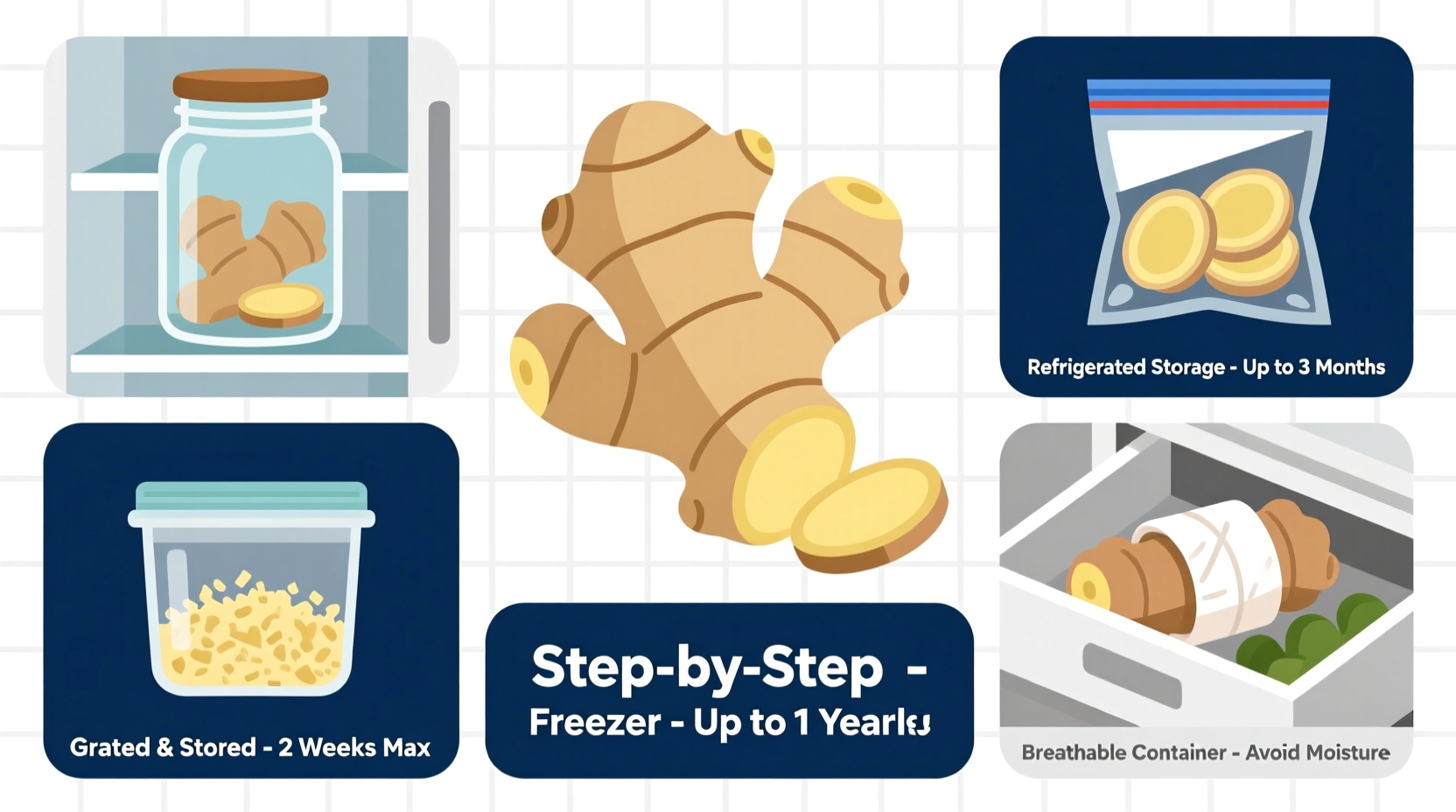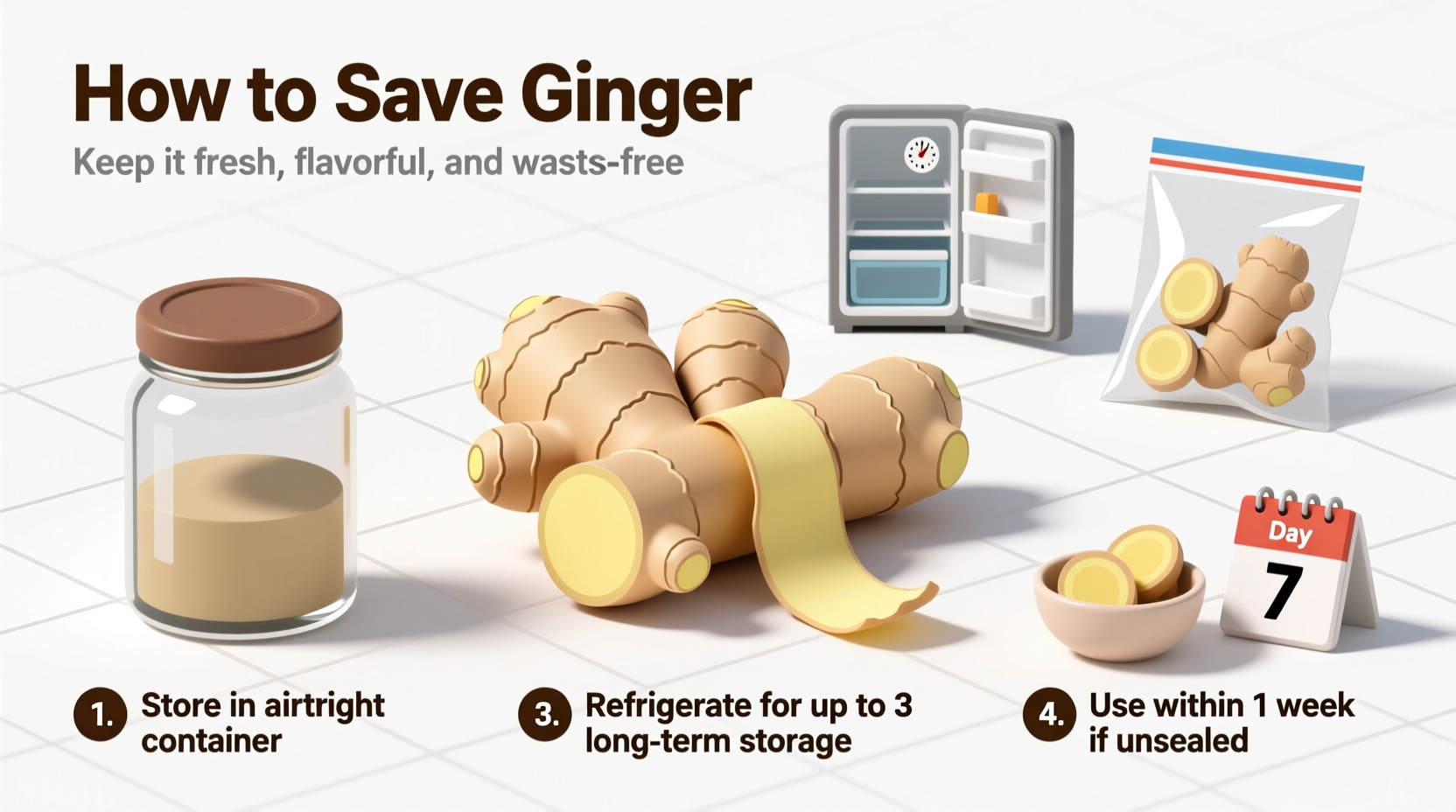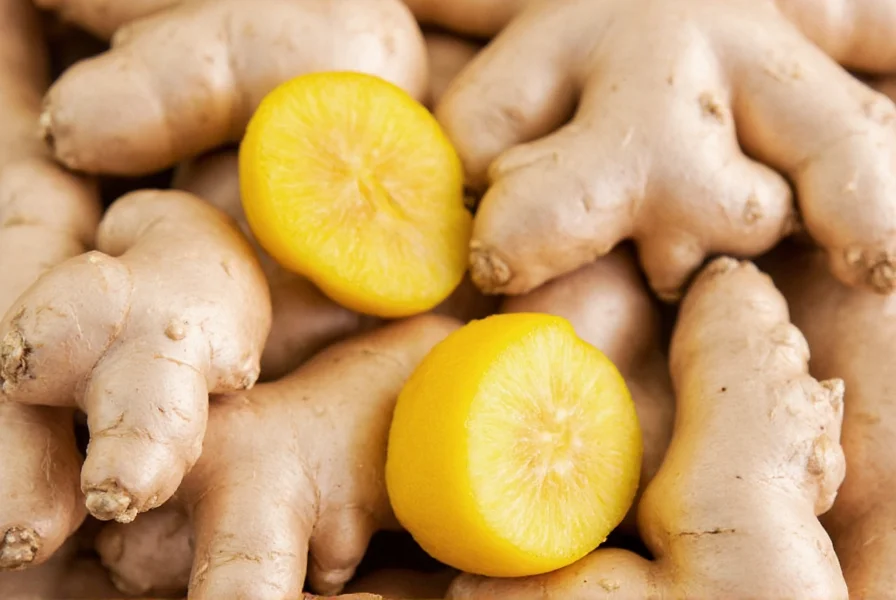Why Ginger Spoils Faster Than You Think
Ginger's high moisture content (70-80%) and volatile compounds make it vulnerable to mold, dehydration, and enzymatic browning. At room temperature, germination begins within 10 days above 18°C, while refrigeration below 10°C causes chilling injury—a scientific term for cellular damage that accelerates decay. This isn't just kitchen lore; a PMC study tracking ginger over 10 months proves improper storage degrades key compounds like gingerol by 15-22% within 4 weeks.
Science-Backed Storage Methods Compared
| Method | Shelf Life | Gingerol Retention* | Texture Preservation | Best For |
|---|---|---|---|---|
| Freezer (whole, unpeeled) | 10+ months | 98% (PMC) | Excellent | Long-term stockpiling |
| Refrigerator (wrapped) | 3-4 weeks | 85% (PMC) | Good (weeks 1-2) | Weekly meal prep |
| Room temperature | ≤3 weeks | 72% (PMC) | Poor (mold risk) | Immediate use only |
*Gingerol = primary bioactive compound responsible for flavor and health benefits. Data sourced from National Institutes of Health research.

When to Use (and Avoid) Each Method
Freezing is mandatory when:
- You bought ginger in bulk (common during harvest season)
- Planning to use ginger in cooked dishes (soups, stir-fries)
- Preserving medicinal properties for >4 weeks
Avoid freezing if:
- Making raw preparations like ginger shots (texture becomes fibrous)
- Using within 7 days (refrigeration suffices)
Refrigeration works only when:
- Storing unpeeled roots wrapped in breathable material (paper towels, not plastic)
- Consuming within 28 days (beyond this, gingerol degrades significantly per The Produce Moms)
Never store ginger at room temperature if:
- Humidity exceeds 60% (triggers mold)
- Room temperature fluctuates above 20°C
- Roots show any cuts or bruises

Professional Storage Protocol
Follow these chef-tested steps for maximum shelf life:
- Do not wash or peel—moisture accelerates decay. Brush off dirt with dry cloth.
- For freezer storage: Place whole roots in freezer bags, squeeze out air, and freeze flat. For pre-cut portions, freeze grated ginger in ice cube trays with water, then transfer cubes to bags.
- For refrigerator storage: Wrap in paper towels, place in perforated produce bags, and store in crisper drawer (humidity setting: high).
- Revive limp ginger: Soak in cold water for 1 hour—this temporarily rehydrates fibers.
3 Costly Storage Mistakes (Backed by Data)
- Mistake: Storing peeled ginger
Consequence: 40% faster moisture loss (PMC study). Always peel immediately before use. - Mistake: Using airtight plastic containers in fridge
Consequence: Traps ethylene gas, causing internal condensation and mold. Use breathable wraps instead. - Mistake: Freezing ginger with chemical additives
Consequence: Alters pH and degrades gingerol—as proven in frozen storage trials.
Everything You Need to Know
No. Research from the National Institutes of Health confirms frozen storage preserves 98% of gingerol (the key bioactive compound) for 10+ months. Refrigeration retains only 85% after 4 weeks.
Discard ginger showing: 1) Dark mold spots (not surface mold you can scrape off), 2) Soft, wet texture when squeezed, 3) Sour or fermented smell. Note: Sprouting is safe but indicates flavor degradation—use within 3 days.
Not recommended for long-term storage. Oil creates anaerobic conditions where botulism spores can grow. Vinegar alters pH and degrades gingerol—as shown in PMC storage trials. Use within 1 week if prepared this way.
Peeled ginger loses moisture 40% faster due to exposed fibers (PMC data). If you must store peeled ginger, submerge it in sherry or vodka in an airtight container—but use within 3 days as flavor compounds degrade rapidly.










 浙公网安备
33010002000092号
浙公网安备
33010002000092号 浙B2-20120091-4
浙B2-20120091-4